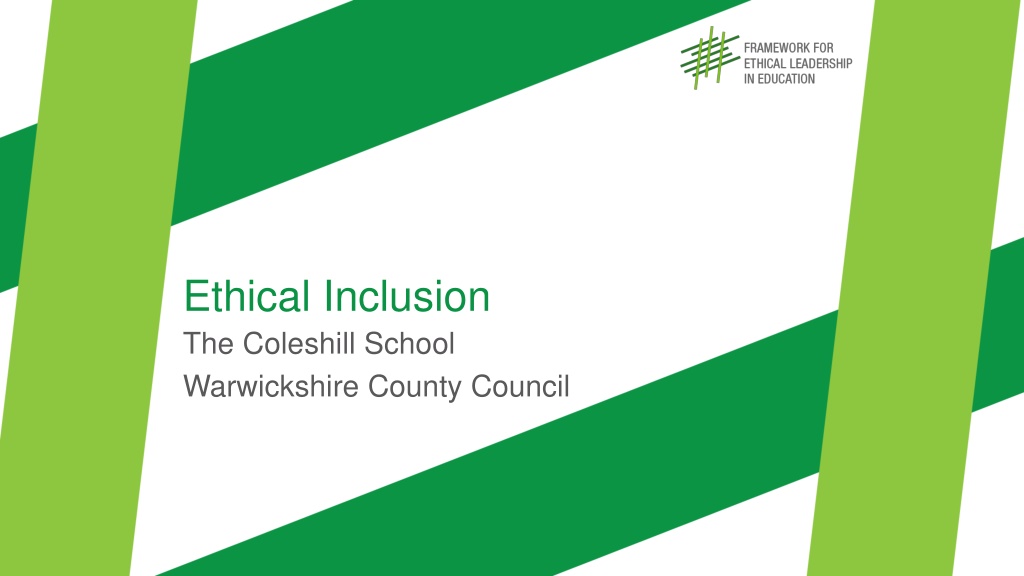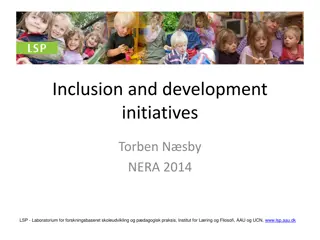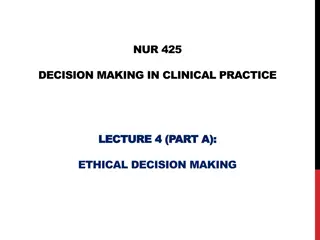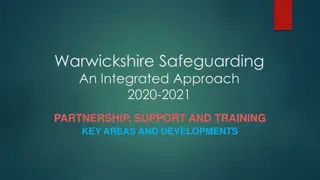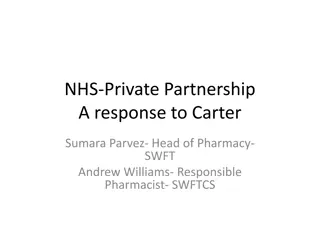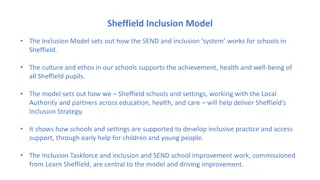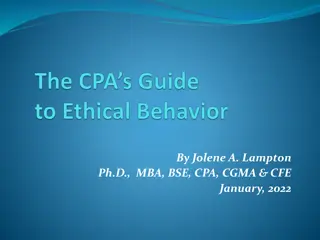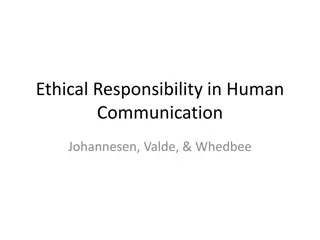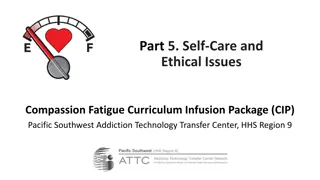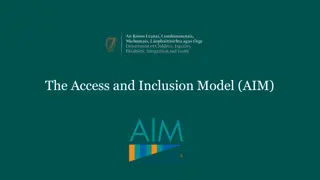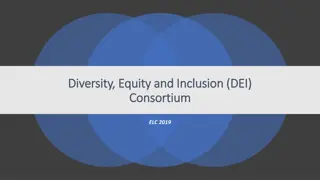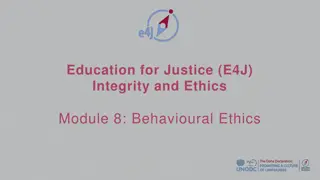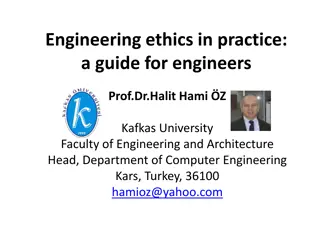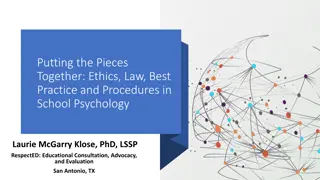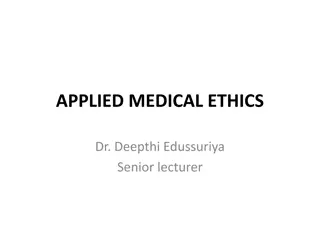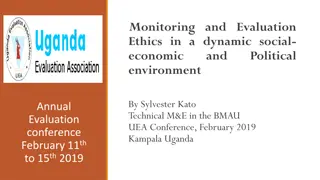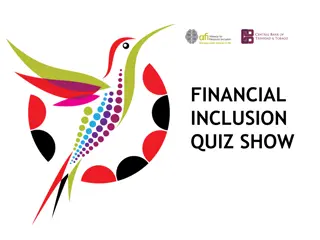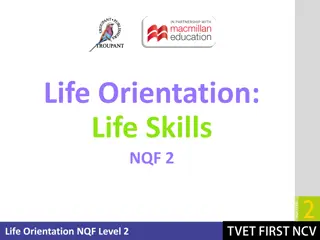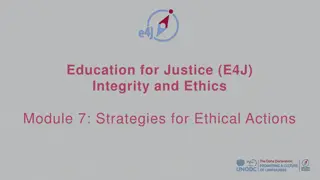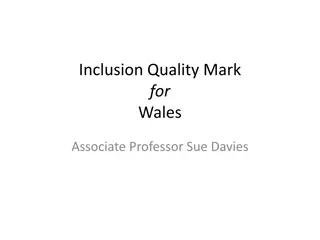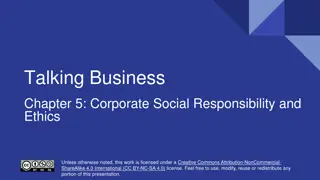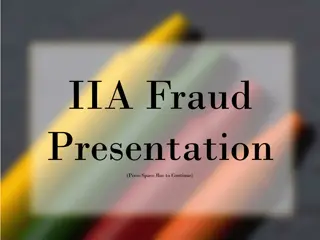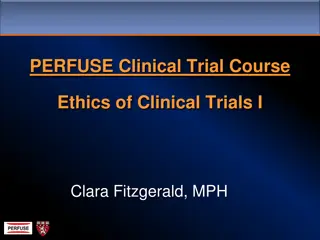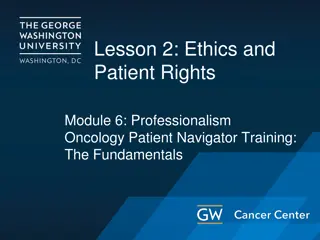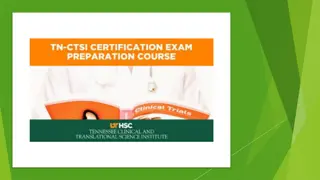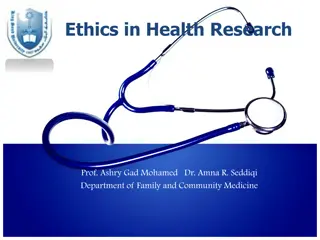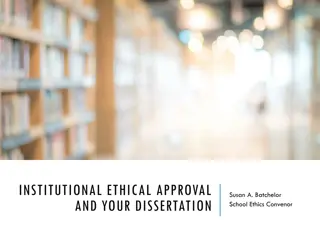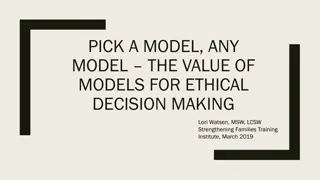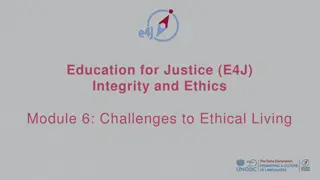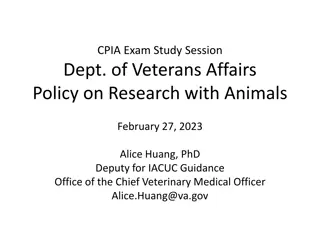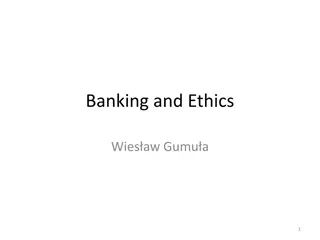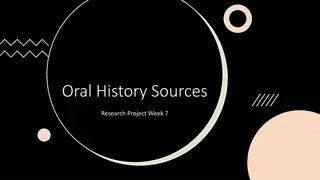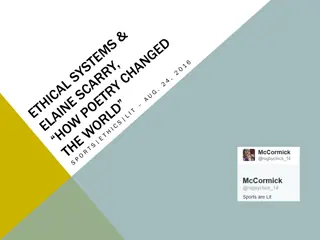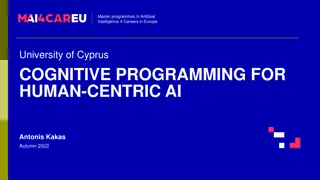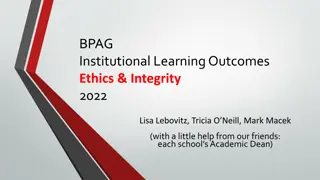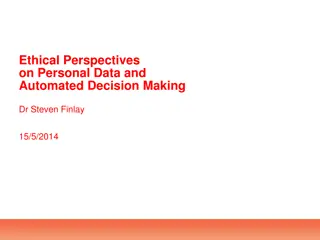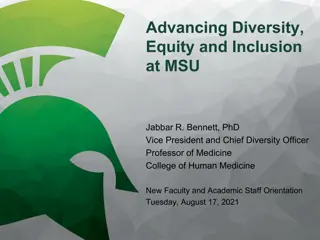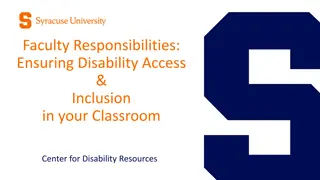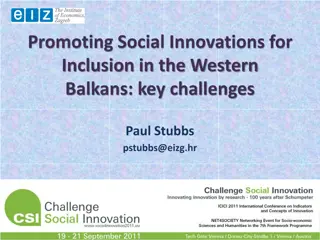Promoting Ethical Inclusion in Education: A Case Study from Warwickshire
Ethical inclusion at The Coleshill School in Warwickshire, as supported by the Timpson report, focuses on achieving maximum outcomes for all children by being brave, inclusive, and transparent. The school's commitment to supporting challenging students reflects a broader goal of no child left behind in the county, emphasizing selflessness, integrity, objectivity, accountability, openness, honesty, and leadership. The school's efforts have led to a significant reduction in exclusions, highlighting the positive impact of their approach.
Download Presentation

Please find below an Image/Link to download the presentation.
The content on the website is provided AS IS for your information and personal use only. It may not be sold, licensed, or shared on other websites without obtaining consent from the author. Download presentation by click this link. If you encounter any issues during the download, it is possible that the publisher has removed the file from their server.
E N D
Presentation Transcript
Ethical Inclusion The Coleshill School Warwickshire County Council
What does Ethical Inclusion mean and why bother? On a County level: We needed to adapt to ensure that we were not letting children fall by the wayside because of targets and other school priorities. (The Timpson report supported our objectives). Aims and impact We have an absolute commitment to achieving the maximum outcomes for every child s education in Warwickshire. We will be relentless and brave in our pursuit of opportunities and solutions for the future of Warwickshire children, working in partnership celebrating success and aiming for excellence. On a School level: We needed to be brave and ensure that we had exhausted every possibility for the children in our care and that exclusion was not the easy answer. We needed time- out to reflect on our values and ensure that our decisions were based on our core principles. Aims and impact Our children and community rely on us to support both challenging students and those who are sometimes affected by those students. The easy decision is not always the right decision and we aim to commit to all the children in our wider community and society, not just those on our roll.
No Child Left Behind in Warwickshire They are all our children! SELFLESSNESS Improve quality of AP across Warwickshire and the support for students who are excluded. INTEGRITY Work collaboratively with all stakeholders to agree a shared vision for addressing the well being of learner s currently missing education and how we will improve their educational outcomes OBJECTIVITY Review the systems across the county to streamline processes and make consistent across all areas. ACCOUNTABILITY No more looking at the floor! OPENNESS Develop the workforce across schools, colleges, WBLP, VCS and AP providers creating a Buzz about how Warwickshire educational institutes works with the most vulnerable students. HONESTY Be honest about what you can offer the children in your care. LEADERSHIP Develop Warwickshire as an innovative county who are leading edge/ test bed for new initiatives re behaviour.
Would you accept this service? No. Neither will our children.
Every child is gifted, they just unwrap their packages at different times! Barriers in our setting: Time Class sizes Results and inspections Parents (of all children) Reputation Staffing and financial constraints Solutions: Case studies - whole school to personalised and back again. Empathy the child s lived experience Being open to change Being consciously competent rather than unconsciously incompetent - CPD. Communication with stakeholders Honest reflection
Impact 50% reduction in PX across Warwickshire in 2018/2019 Coleshill context increase from 741 in 2014 to 1300 in Sep 2019 only 1 PX despite increased roll and diversity of intake. We have been able to maintain an ethical approach, no off rolling. Closer work with bespoke (QA assured) AP to support students.
Completing The Audit Leadership Principles This was very much about generating a growth mind-set from the top down. An initial reflection session enabled people to be open to the idea of Ethical Leadership as a way of working as opposed to a theory. This then enabled us to move forward with practical case studies and activities to shape our decisions. Safeguarding Values and Virtues Policies and procedures are in place but this brings us back to moving away from box ticking and towards an embedded culture. The beginnings of this are underway but consistent drip feeding will be required for success. Having a champion to maintain momentum is a must. Leadership Team were easy to convince the next step is the rest of the staff. Management Styles We have already moved to gain an understanding of the ways in which the framework could influence management styles within school from the Leadership Team, to Staff, and to Governors and recognition of those values which come naturally . However the next step is to become more strategic in our approach by incorporating the principles when recruiting staff and in in our decision making process. The case-studies have been invaluable here. A Model Community Here lies the challenge! Only when Ethical Leadership is truly embedded within our organisation, policies, procedures and decision making, at all levels, can we truly model this for other stakeholders to influence the community at large.
What is the difference between Leaders and Managers? Managers are people who do things right and leaders are people who do the right thing.
